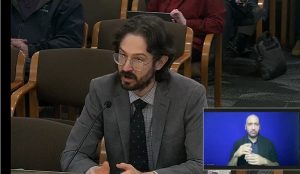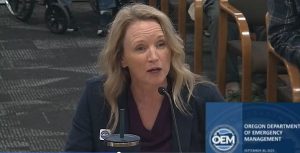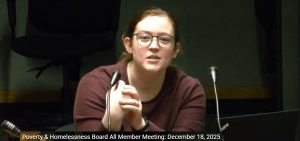Review community engagement best practices by Aug. 1
3 min read
from The Oregon Water Resources Department and staff reports
An Oregon state government interagency team is seeking comments on its draft document, Best Practices in Community Engagement around Water Projects.
Email your comments to engagement.best.practices@water.oregon.gov through Aug. 1 at 5 p.m.
All comments received will be reviewed by the interagency team: the Oregon Water Resources Department, the Oregon Health Authority, Oregon Business Development Department, Oregon Department of Fish and Wildlife, Oregon Department of Environmental Quality, and Oregon Watershed Enhancement Board.
As part of Oregon Revised Statutes (ORS) 541.551, if the named state agencies provide support for the creation of community engagement plans, then Best Practices in Community Engagement must be followed.
The agencies charged with developing these best practices recognize that each water project differs in scale and scope. As such, community engagement will also vary and not all best practices may apply to each water project.
The agencies co-leading this process are excited to collaborate with partners to refine the draft Best Practices guidance. The agencies will work together to ensure feedback is incorporated into the final document to provide the most meaningful set of best practices for community engagement around water projects.
The March 14, 2024 open house shares background information that explains how the draft document was created.
Oregon’s economic vitality relies heavily on its water resources. “In 2023, it was estimated that over 48% of the state’s total economic output and nearly 44% of its employment are directly linked to water. The fundamental value of water extends across Oregon communities’ lives, including in housing, infrastructure, health, manufacturing, agriculture, energy, recreation, as well as the food and beverage industries,” the draft states.
As drought conditions increase in intensity and duration, and as Oregon’s population centers continue to grow, concerns about water scarcity increase the need for inclusive water project solutions.
“Engagement improves projects and helps Oregon meets the water needs of its economy, environment, communities, and cultures,” the draft document explains. “This involvement between local communities and projects facilitates the exchange of invaluable local knowledge and insights, enriching the effectiveness and relevance of each water project.
“Additionally, fostering local community trust encourages transparency and cooperation among project organizers, regulatory agencies, and those impacted, thus promoting a sustainable and reliable water future for Oregon.”
Developed in response to House Bill 3293 (2021), the interagency document identifies 10 best practices:
- Identify disproportionately impacted communities with interest in engaging in water project planning.
- Define the water project purpose and goals, including what will be done to involve disproportionately impacted communities.
- Develop new, or assess current, decision-making frameworks to identify opportunities to enhance access to the decision-making process for disproportionately impacted communities.
- Invite tribal communities in Oregon to participate in the water project, acknowledging their preferences and capacity for collaboration.
- Co-create water project capacity opportunities that are inclusive, including to disproportionately impacted communities.
- Build collaborative relationships with disproportionately impacted communities and ensure all parties’ voices are heard in the water project.
- Coordinate with the community and across water project participants to leverage resources, staff, and data.
- Ensure water project communications and information are shared in a timely, transparent manner, and in languages and formats commonly used or preferred by disproportionately impacted communities.
- Evaluate community engagement effectiveness before, during, and after the water project, based on communities’ and projects’ purposes and goals as well as capacities, and adapt future projects as appropriate.
- Strive to monitor and document the positive and negative impacts of the water project on disproportionately impacted communities and their environments.
For a complete discussion of each of the 10 best practices, see the draft document or email engagement.best.practices@water.oregon.gov.






